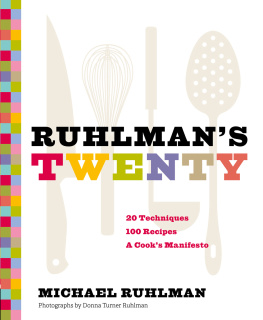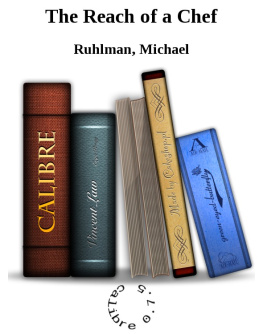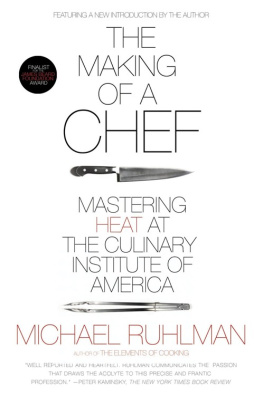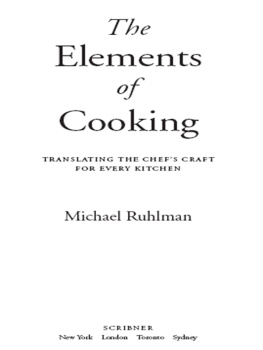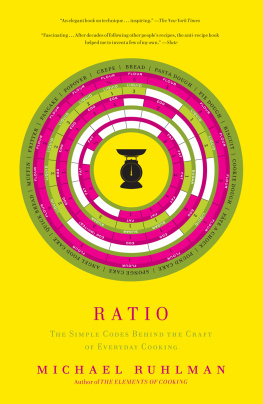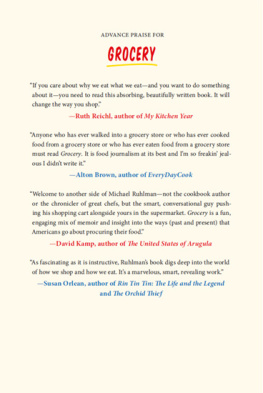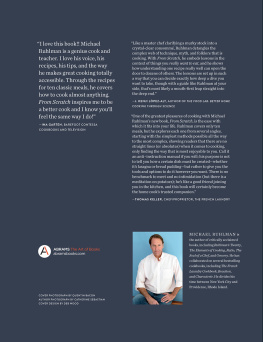The goals of Twenty are straightforward. 1) To identify and describe the fundamental techniques that all cooks, regardless of their skill or station, need and use. 2) To describe the techniques with the intent of getting at their nuances, how the techniques work, why they matter, the mechanisms that make them so pervasive and useful. 3) To photograph the techniques in a way that furthers an understanding of what they are and how and why they work. 4) To create recipes that showcase and provide practical applications for these far-reaching fundamentals.
When you look at the list of my techniques, youll notice that some appear to be ingredients rather than techniques. While they are ingredients, they are also tools, and the best tools have multiple uses. Using these toolssalt, water, acid, onion, egg, butter, flour, sugaris technique. Each of these entities has multiple uses. Understanding all the uses of a single ingredient is like pumping steroids into your cooking muscles.
Other sections are about working with fluid flavors: sauces and soups and flavorful elixirs.
The finale of the book is defined by heat: applying heat to food, knowing what kind of heat to apply to what kind of food, for how long, and then, often, removing that heat.
These twenty are my attempt to organize and describe the fundamentals of cooking for the contemporary home kitchen. They begin where cooking begins, with thinking.
THINKING IN THE KITCHEN. Its underrated. If you have a recipe, do you have to think? When you open a book that says, Combine A and B, add C, stir, and bake for 20 minutes at 350F/180C, do you simply follow the instructions?
Cooking doesnt work that way. Cooking is an infinitely nuanced series of actions, the outcome of which is dependent on countless variables. Whats the simplest dish you can think of? Lets say buttered toast. Can you write a perfect recipe for it? There is no exact way to convey how to make buttered toast and account for all variables. The temperature of the butter has a huge impact on the final result, as does the type of bread, how thick its cut, and how hot your toaster gets. Because all the variables in cooking can never be accounted for, whether youre cooking from a book or cooking by instinct, it stands to reason that the most important first step in the kitchen is simply to think, even if all youre making is buttered toast.
Thinking in the kitchen is underrated.
Thinking.
Before you begin. Stand still. Think.
Its an incredibly powerful toolperhaps your most important tool and technique in the kitchenbut I dont hear chefs or TV cooking shows talking about it explicitly. Think about thinking for a moment. Can you prove that falling objects accelerate rather than fall at a constant speed simply by thinking about it? This took people thousands of years to realize before Galileo proved it, but we can answer the question by performing a simple thought experiment.
In your mind, hold a brick slightly above a bucket full of water and drop it. Imagine the splash. Now, in your mind, hold the brick as high as you can over the bucket. You know whats going to happen and whyyoure jumping back before that brick hits the water. Why will the splash be bigger? Because the brick held from high up is traveling much faster than the brick held low. Youve just suggested that falling objects accelerate rather than travel at a uniform rate, a critical rule of physics, just by thinking about it.
When youre cooking, imagine what is about to happen. Imagine what you expect something to look like. A piece of meat in a saut pan how seared should it look? What should the oil look like before you put the meat in the pan? If it doesnt match up with the image in your head, ask yourself why. Youre told to reduce the cream by half. Imagine what the bubbles will look like when that cream has lost half its water. Think about it. If that cream boils over, as cream often does, what does that mean? Does it mean you have a mess on your stove? Yes. But more important, it means you have less cream in the pot than you may need, now that half of it is smoking on the burner. Think about what youre cooking. Stay ahead of it.
Organize and prepare. These are the two critical acts in a kitchen, and they happen by thinking first. Begin any task with these two actsorganize and prepareand youre on your way. Ignore them and youve put yourself at risk even before youve begun. Ninety-five percent of kitchen failures can be traced back to a failure to organize and prepare at the outset.
Restaurant kitchens have a French term for organization and preparationand its every bit as useful in a home kitchenMise en place.
Mise en place (MEEZ ohn plahs) translates literally to put in place, but what it really means is organize and prepare. It means everything in its place, on your countertop, beside your stove, on your stove, and, most critically, in your mind.
Mise en place is a restaurant description of a cooks station and all the sixth and ninth pans filled with minced shallot and roasted peppers and green beans that have been cooked off and shocked, the trays in the lowboy cooler with the portioned beef, lamb, and pork, the bain-marie insert filled with spatula, sauce spoon, and ladle. Its a setup designed to make successful the improbable ability to cook and serve dozens and dozens of different dinners, many simultaneously, in a very short time, day after day after day. It works.
Theres no reason it wont work for you in your kitchen at home. All you have to do is decide to do it. Stop and think before you begin.
The importance of mise en place cannot be overstated. It doesnt mean simply putting all your ingredients in ramekins on your cutting board or next to your stove (let alone, if youre following a recipe, to have read the recipe all the way through). Its ultimately about thinking. Organizing your mise en place forces you to think through your actions, to plan in your mind the course of your actions.
The second mandate in the ethos of mise en place, one that is rarely made explicit, is to recognize not only what you need in front of you, but also what does not belong, what should not be on your board, beside the stove, in your brain.
One of the keys to successful cooking is to remove obstacles that may be in your path. Clear your way. If cooking is an unbroken series of actions, one motion leading to another leading to another, then it should be obvious that any obstacles that might trip up those actions ought to be removed before you begin. Clear your path, and you are less likely to stumble. This means having all your ingredients before you and having the mixing bowl out so that you dont have to interrupt your cooking to hunt for it. It also means removing anything extraneous from your work area. Get rid of the shopping list, empty glass of milk, and car keys on your counter. Even if the objects are out of your way but still in your vision, remove them.
Here is a moment I will never forget. I was working the grill station in the American Bounty Restaurantthe final restaurant in the curriculum at the Culinary Institute of Americafor my book

